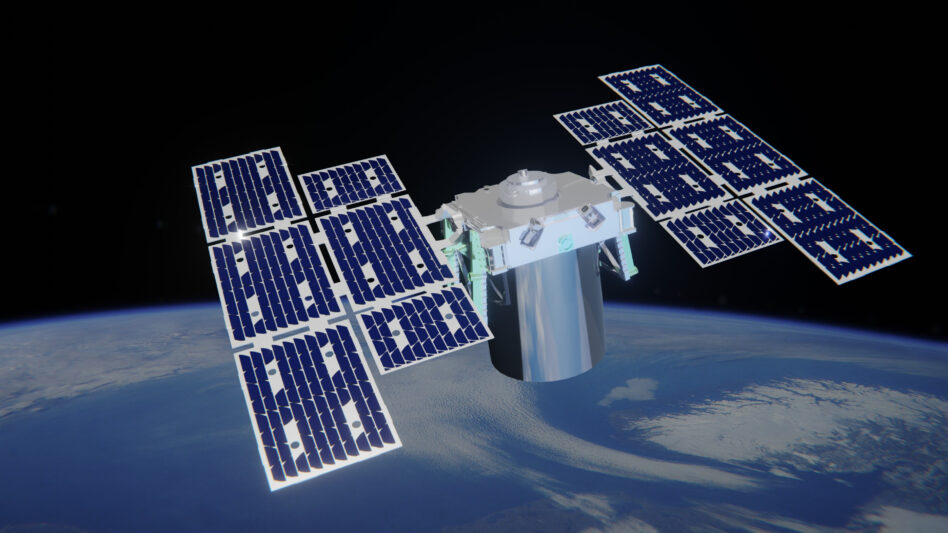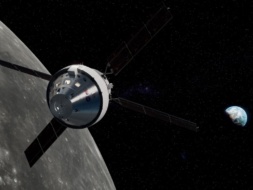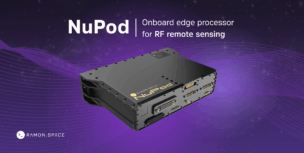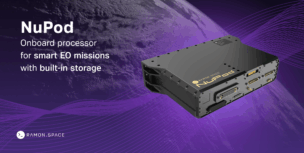At Blue Canyon Technologies, innovation drives impact. The company’s mission: enable space missions to expand the frontiers of science, and defense.
The Boulder, CO-based company manufactures small satellite buses and components. Blue Canyon’s products deliver a standard of performance and precision that didn’t exist for this class of spacecraft a little more than a decade ago, said Matt Baumgart, technical advisor at Blue Canyon. “Our performance-to-cost value enables new constellations, missions, and technologies that wouldn’t be possible otherwise,” he said.
With deep aerospace experience, Blue Canyon’s founders saw an opportunity to leverage miniaturized electronics to lower costs, without sacrificing performance.
A pivotal early partnership with the Air Force Research Laboratory (AFRL) catalyzed Blue Canyon to develop a turnkey guidance, navigation, and control system (GNC). The product—XACT—first flew in 2015 aboard the University of Colorado Boulder’s MinXSS satellite. “That mission set a new standard for pointing performance in cubesats,” Baumgart said. “The market noticed immediately.”
Founded in 2008 and acquired by Raytheon Technologies (RTX) in late 2020, the company has retained its innovation-first culture while gaining powerful support. “From the beginning, RTX prioritized maintaining Blue Canyon’s innovation culture,” Baumgart said. “Now, we tap into their subject-matter experts, facilities, and network, eliminating many limitations we faced as a smaller, standalone company.”
Spacecraft, Components, and Capabilities
Blue Canyon manufactures complete spacecraft, ranging from 3U cubesats to ESPA-class minisatellites, and produces nearly all components in-house, including:
- Star trackers;
- Reaction wheels;
- Batteries;
- Simulation tools;
- Solar arrays and drive assemblies.
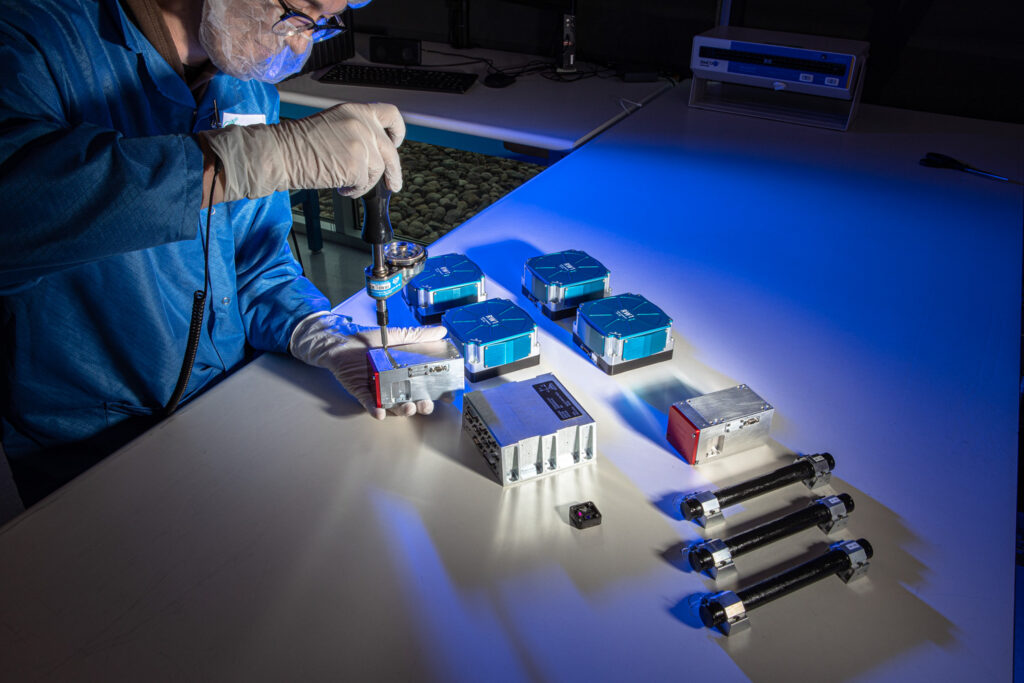
Blue Canyon’s signature, precision pointing GNC systems simplify one of the hardest parts of spacecraft design. Products include:
- XACT, which is optimized for cubesats;
- FleXcore, which is tailored for larger minisatellites.
“Customers who aren’t GNC experts can achieve high performance with just a few simple commands,” Baumgart said.
To ensure mission success, Blue Canyon operates a highly automated Mission Operations Center. “Our automated mission operations services began when a customer asked us to fly their cubesat, and just send the data back,” Baumgart said. “Because we use a common software base, understanding one Blue Canyon spacecraft helps you understand them all.”
Designed for the Hardest Missions
Blue Canyon’s systems have evolved from a heritage of high-precision spacecraft. “We built our GNC systems from the ground up for superior pointing performance, giving us an edge as customer demands grew,” said Baumgart.
He noted a shift towards spacecraft survivability and availability. “Early missions aimed to demonstrate new capabilities, but now these are core components of high-reliability space missions. We’re able to use the same technology base to meet all of these diverse mission environments and needs, because the technology base has been designed for the hardest missions.”
Baumgart noted that many Blue Canyon components share interfaces and designs that scale by size, not complexity. “All the wheels essentially operate the same way…You can reuse test procedures, interfaces, and other things across the product line.”
Blue Canyon serves a broad range of customers:
- 49% commercial
- 27% civil
- 24% defense
Blue Canyon systems support missions involving:
- Optical imaging;
- SAR;
- Astronomy;
- Communications;
- Weather observation;
- Deep space exploration;
- National security objectives.
Agility is another standout feature: the company’s control moment gyroscopes, and Optimal Attitude Trajectory System (OATS) software, significantly increase repointing speed and attitude maneuverability, Baumgart said.
But for customers, the simplicity of the user experience is a defining attribute of Blue Canyon’s systems. “You can point an instrument at a target with one command—it just happens,” Baumgart said. “That’s the level of simplicity we aim for.”
Vertical Integration and Connected Roadmaps
Vertical integration drives Blue Canyon’s reliability, responsiveness, and efficiency. Improvements to one component—such as a star tracker—feed into related products such as the spacecraft bus or GNC system, Baumgart said. “It creates a connected roadmap.”
Blue Canyon continually updates its portfolio through a robust internal research and development program. “We’ll deliver our first 16U cubesats later this year—our largest cubesats yet,” Baumgart said.
Blue Canyon has implemented generational enhancements across its product lines. “Many of our products are now in their third generation; we improve weak points, add sophisticated and autonomous fault-protection and recovery, and enhance product testing and qualification,” said Baumgart. These improvements are based on operational flight data from customers, mission partners, and Blue Canyon mission operations.
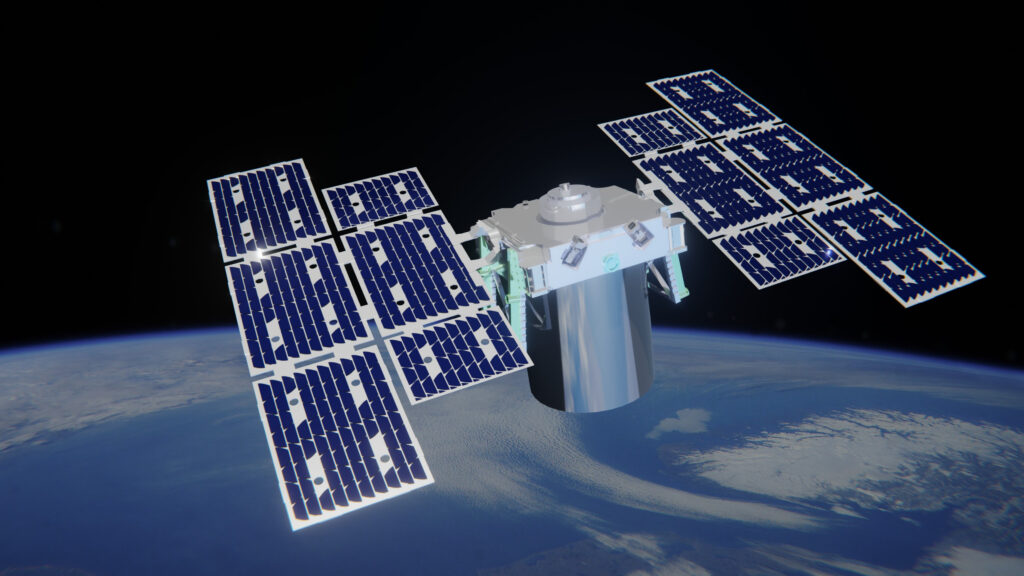
The company is finalizing its Saturn-400 small satellite bus platform, which supports increased power and payloads. The Saturn-400 bus builds upon the Saturn-200 platform, with targeted changes. “You need a bigger structure and reaction wheels, but you don’t need to change the flight software, sun sensors, or data recorders,” Baumgart said. “We only change what is necessary.”
Blue Canyon also recently launched the RW16, which is a new reaction wheel twice the size of the company’s previous largest model. “It’ll enter flight service within the next year or two,” he said.
Market Demand, Industry Trends, and Partnerships
Baumgart noted a sustained trend driving Blue Canyon’s latest developments. “The market wants the same performance-to-cost ratio, just scaled up,” he said.
Partnerships with government agencies underscore the need for reliability in the most critical national security missions, while commercial demand grows from the ease of integration. “Our goal is to make Blue Canyon products turnkey, and compatible with a range of mission architectures,” Baumgart said.
Blue Canyon’s business model is strategically positioned between the opposite ends of strict standardization, and complete customization. “We have standard designs, and if customers need more, we develop efficient deltas from high-heritage baselines,” he said. “That allows us to deliver higher performance, without the risks and delays of bespoke solutions.”
With 84 spacecraft launched to date, Blue Canyon has an impressive flight heritage. That total includes a range of spacecraft from cubesats to minisats, operating in LEO, GEO, and cislunar orbits, as well as interplanetary missions.
Notable partnerships include:
- NASA;
- JPL;
- MIT Lincoln Laboratory;
- DARPA;
- AFRL;
- Johns Hopkins University APL.
Among standout missions, Baumgart highlighted:
- NASA’s Starling technology demonstration: A cluster of cubesats demonstrating autonomous swarm capabilities, including optical imaging between spacecraft to maintain relative positioning without ground control.
- DARPA’s Blackjack constellation: A program to demonstrate the military utility of LEO satellite constellations, using Blue Canyon microsatellites as platforms for advanced defense technologies.
- NASA’s Time-Resolved Observations of Precipitation structure and storm Intensity with a Constellation of Smallsats (TROPICS) weather constellation: A fleet of 3U cubesats designed to observe cyclones in a unique, inclined LEO over Earth’s tropics, which allows them to travel over any given storm about once an hour.
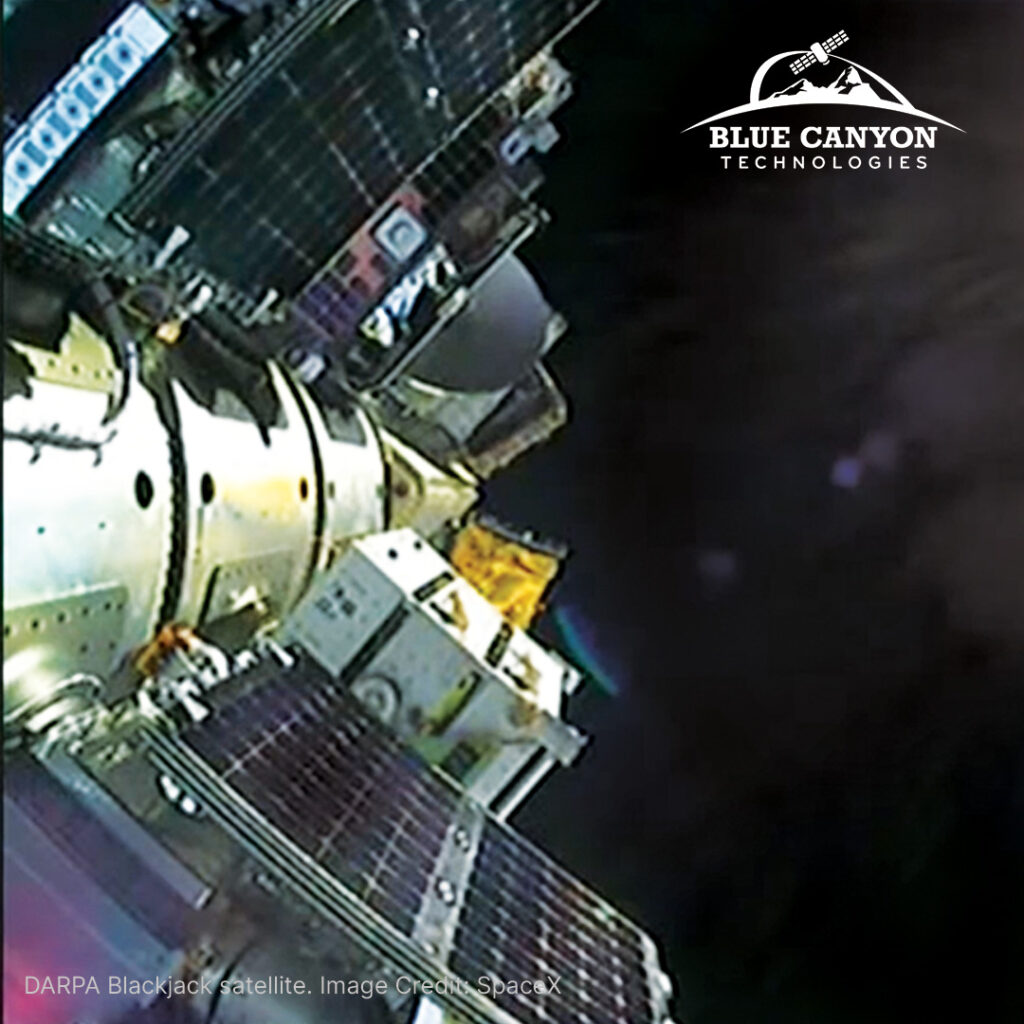
Vision and Strategic Outlook
Blue Canyon sees the future of small satellites trending larger and more autonomous. Lower launch costs make larger spacecraft more attractive, and “our model is ready to scale,” Baumgart said.
The company continues to invest in autonomy-ready buses. “We’re designing spacecraft that integrate easily with payloads that provide autonomous feedback and control,” he said. “We’ve already demonstrated that on-orbit.”
Baumgart summed up Blue Canyon’s outlook simply: “If we keep delivering performance and cost in ways that make new missions possible, then success will continue to follow.”
